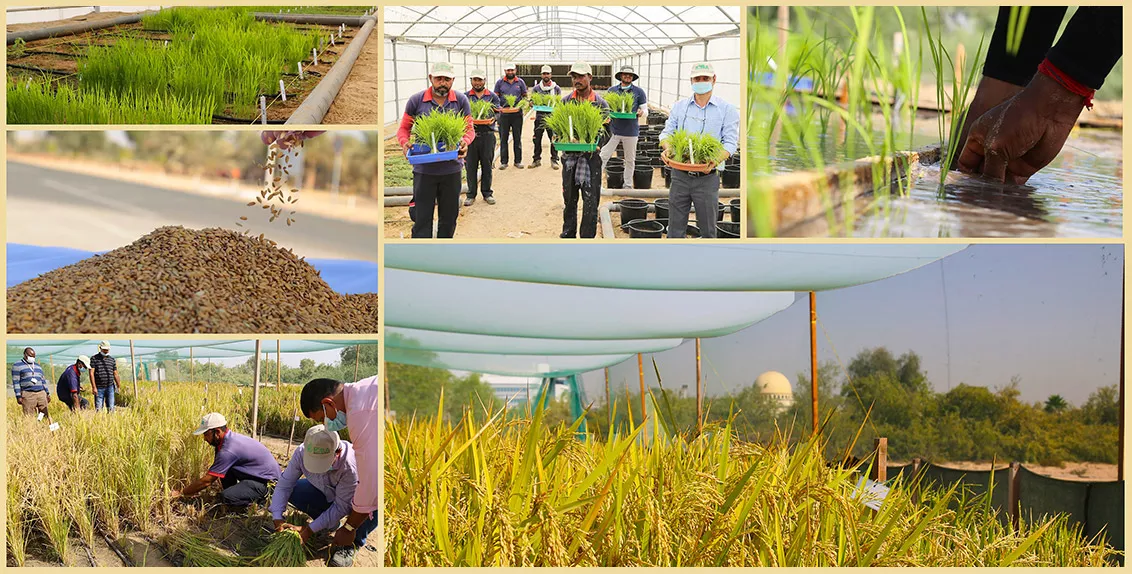ICBA studies how to best grow salt-tolerant rice in UAE
Scientists at the International Center for Biosaline Agriculture (ICBA) have carried out an experiment to find the most suitable irrigation method to grow salt-tolerant rice under saline and desert conditions in the UAE. The objective was to determine efficient approaches to cultivating salt-tolerant rice under local conditions.
As part of the experiment conducted between September 2020 and May 2021 at ICBA’s research station in Dubai, scientists evaluated four salt-tolerant rice varieties from the Bangladesh Rice Research Institute (BRRI): BRRI dhan 47; BRRI dhan 61; BRRI dhan 67; and BRRI dhan 78.
The varieties were tested using three irrigation methods: sub-surface drip irrigation without plastic lining; sub-surface drip irrigation with a sealed iron sheet at the bottom (a weighing-type lysimeter); and surface drip irrigation with plastic lining.
Results show that a grain yield of about 7.5 tonnes per hectare was achieved when surface drip irrigation with plastic lining was used. The medium- and long-duration varieties flowered slightly late due to cold spells during December and January and 50% flowering was recorded within 118-154 days. Moreover, BRRI dhan 78, a late-flowering variety, performed relatively better when surface drip irrigation with plastic lining was used compared to the other varieties, followed by BRRI dhan 61, a medium-duration variety.
Overall, results suggest that rice’s response to marginal conditions varies according to sowing dates. For example, a higher yield can be obtained if seeds are sown in the second week of September in a controlled environment facility (a greenhouse or net-house), followed by transplanting seedlings to the open field in the first week of October.
Dr. RK Singh, Program Leader on Crop Diversification and Genetics, ICBA, and lead scientist of the experiment, said: “Our results showed that short-duration varieties can perform relatively better under local conditions. Moreover, we need to design low-cost permanent or semi-permanent irrigation systems. For example, it is necessary to install durable plastic lining at the depth of 30 cm in a large area to avoid percolation losses. We also need to screen rice germplasm to identify the most suitable short-duration, salt-tolerant and high-yielding genotypes. I think rice cultivation could be scaled up in the UAE after identifying and standardizing the most appropriate practices under local conditions.”
As a follow-up to the experiment, ICBA is now beginning a large-scale study using water at different salinity levels to identify the varieties suitable for the UAE and other countries with similar environmental conditions; and to estimate the exact water requirements for varieties under different stresses.
